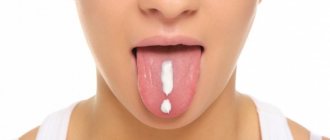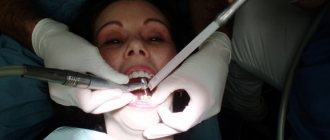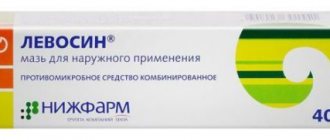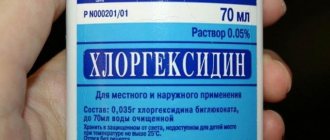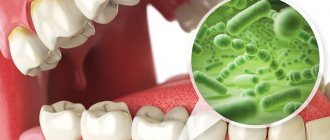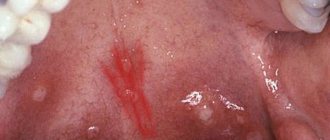Content:
- The most common gum diseases
- Why gum disease occurs
- How diseases manifest themselves
- Treatment
- Preventive measures
4.1. Oral hygiene 4.2. Physiotherapy 4.3. Anti-inflammatory drugs 4.4. Curettage 4.5. Surgery
Worried about the whiteness of their teeth and the aesthetics of their smile, people often forget about the health of their gums. Meanwhile, among other dental diseases, their pathologies provide significant competition to caries. Moreover, premature loosening and loss of incisors and molars is very often associated with infection of the apparatus that holds them.
Healthy eating in old age
The diet of an elderly person should be varied and healthy. The need for minerals and vitamins increases with age. Vitamin complexes can be used. Calcium is especially needed, which accumulates poorly and is lost from the period of maturity. Due to its deficiency, teeth and bones become fragile. Vitamins A, C, D and others are important.
You should limit your consumption of sweets. A good alternative is a glass of water with a tablespoon of honey. This drink can replace morning or evening tea. It will prevent dental diseases and help treat existing problems.
Before drinking a cup of coffee or tea in the morning, eat a small piece of solid food.
Do not mix very cold and hot foods.
Special attention should be paid to the nutrition of people without teeth. The oral cavity of such pensioners is vulnerable, so the food must be suitable.
When creating a menu and preparing food for elderly people without teeth, you need to follow these rules:
• Eat soft foods. Examples: cream soup, fresh bread, bananas. Rough food and large pieces can be chopped, include more drinking food in the diet, or choose recipes with soft dishes. • Food for older people without teeth should be healthy and balanced. Proteins, fats and carbohydrates are important in the diet. You should not replace healthy foods with only easy-to-digest ones. Yogurt will not be able to nourish you in the same way as meat - both products are healthy and necessary, only in the second case careful processing and grinding is important. • Consult your doctor when planning your diet. He will help you choose a menu and create a diet, tell you what to include in your diet and what to exclude from it. A nutritionist will select a suitable diet and create a nutrition plan. • Planning will help you create a varied and healthy diet. Make a list of groceries and dishes for your relative for the week, select suitable recipes. For example, you can plan oatmeal for breakfast, stew and soup for lunch, and a vegetable salad for dinner. A good snack option is healthy smoothies. • Use suitable kitchen equipment. A food processor will help grind various solid foods, a blender will help create purees and liquid smoothies.
It is very important for an elderly person to monitor the condition of the oral cavity. Maintaining hygiene, regular visits to the dentist, timely treatment of diseases and prevention of dental problems will help maintain oral health for life.
The most common gum diseases
More often than others, dentists diagnose the following pathologies in adults:
Gingivitis. Inflammatory lesion of mucous membranes. Leads to swelling and inflammation, the appearance of bad breath, and the formation of erosions. It can be acute and chronic, catarrhal, atrophic and ulcerative-necrotic. With this diagnosis, the enamel and roots are not affected - only the gums are affected. If gingivitis is not treated promptly, it can develop into periodontitis.- Periodontitis. This is a periodontal lesion that causes destruction of the ligaments of the tooth and the jaw bone. The first signs of the disease are bleeding and pain. Complications in the form of suppuration, periodontal pockets, fistulas, and periostitis are possible.
- Periodontal disease. Occurs in 8% of patients who go to the dentist due to unsatisfactory gum condition. The disease affects the supporting part of the tooth and disrupts its blood supply. As a result, the gums turn red, recede, and the roots become exposed. Affected units become highly mobile and may fall out.
Today it has been noticed that gingivitis is more common in young children and women. The likelihood of its occurrence is especially high during pregnancy. This is due to changes in hormonal levels.
Elderly people are prone to periodontitis. In older people, the rate of metabolic processes is significantly reduced. As a result, the tissues do not receive enough of the substances they need, oxygen.
For any gum infection, you should consult an experienced dentist. It is not always possible to correct the situation with rinsing alone. Treatment can be long and complex.
ODONTOGENIC AND PERIODONTAL INFECTION
PULPITIS
Main pathogens
Viridans streptococci ( S. milleri
), non-spore-forming anaerobes:
Peptococcus
spp.,
Peptostreptococcus
spp.,
Actinomyces
spp.
Choice of antimicrobials
Antimicrobial therapy is indicated only in case of insufficient effectiveness of dental procedures or spread of infection into surrounding tissues (periodontal, periosteal, etc.).
Drugs of choice
: phenoxymethylpenicillin or penicillin (depending on the severity of the disease).
Alternative drugs
: aminopenicillins (amoxicillin, ampicillin), inhibitor-protected penicillins, cefaclor, clindamycin, erythromycin + metronidazole.
Duration of use
: depending on the severity of the current (at least 5 days).
PERIODONTITIS
Main pathogens
Microflora is rarely detected in the periodontal structure and is usually S.sanguis, S.oralis, Actinomyces
spp.
In periodontitis in adults, gram-negative anaerobes and spirochetes predominate. P.gingivalis, B.forsythus, A.actinomycetemcomitans and T.denticola
are highlighted most often.
In juveniles, there is rapid involvement of bone tissue in the process, with A. actinomycetemcomitans
and
Capnocytophaga
spp.
P.gingivalis
is rarely isolated.
In patients with leukemia and neutropenia after chemotherapy along with A. actinomycetemcomitans
C.micros
is isolated , and in prepubertal age -
Fusobacterium
spp.
Choice of antimicrobials
Drugs of choice
: doxycycline; amoxicillin/clavulanate.
Alternative drugs
: spiramycin + metronidazole, cefuroxime axetil, cefaclor + metronidazole.
Duration of therapy
: 5-7 days.
For patients with leukemia or neutropenia after chemotherapy, cefoperazone/sulbactam + aminoglycosides are used; piperacillin/tazobactam or ticarcillin/clavulanate + aminoglycosides; imipenem, meropenem.
Duration of therapy
: depending on the severity of the course, but not less than 10-14 days.
PERIOSTITIS AND OSTEOMYELITIS OF THE JAWS
Main pathogens
With the development of odontogenic periostitis and osteomyelitis, S. aureus
, as well as
Streptococcus
spp., and, as a rule, anaerobic flora prevails:
P.niger, Peptostreptococcus
spp.,
Bacteroides
spp.
Specific pathogens are less commonly identified: A.israelii, T.pallidum
.
Traumatic osteomyelitis is often caused by the presence of S.aureus
, as well as
Enterobacteriaceae
spp.,
P.aeruginosa
.
Choice of antimicrobials
Drugs of choice
: oxacillin, cefazolin, inhibitor-protected penicillins.
Alternative drugs
: lincosamides, cefuroxime.
When P.aeruginosa
, antipseudomonas drugs (ceftazidime, fluoroquinolones) are used.
Duration of therapy
: at least 4 weeks.
ODONTOGENIC MAXILLARY SINUSITIS
Main pathogens
The causative agents of odontogenic maxillary sinusitis are: non-spore-forming anaerobes - Peptostreptococcus
spp.,
Bacteroides
spp., as well as
H.influenzae, S.pneumoniae
, less often
S.intermedius, M.catarrhalis, S.pyogenes
.
Isolation of S.aureus
from the sinus is characteristic of nosocomial sinusitis.
Choice of antimicrobials
Drugs of choice
: amoxicillin/clavulanate. For nosocomial infection - vancomycin.
Alternative drugs
: cefuroxime axetil, co-trimoxazole, ciprofloxacin, chloramphenicol.
Duration of therapy
: 10 days.
Why gum disease occurs
No matter how trivial it may sound, most often these pathologies are associated with poor hygiene. People brush their teeth quickly, in a hurry. Often they use a brush of inappropriate hardness or a toothpaste of the wrong composition. As a result, the required level of protection against pathogenic organisms is not provided.
Microorganisms that live in the oral cavity feed on food debris and multiply in them. Soft plaque and hard stone are the results of their vital activity. Dental plaque puts pressure on the gums and contributes to their inflammation. If you do not remove them in time, they begin to go under the gum along the tooth root. Then periodontal pockets appear, which are not so easy to close.
Other causes of dental disorders:
- hormonal imbalances;
- endocrine disorders;
- poor-quality installation of fillings;
- burns;
- injuries;
- poorly fixed dental prostheses;
- avitaminosis;
- malocclusion;
- diabetes;
- diseases of the gastrointestinal tract;
- genetic predisposition.
Sometimes long-term drug treatment leads to the disease. There are drugs that impair tissue nutrition and reduce saliva production.
Experts' opinion
Asept products have proven effectiveness. For example, multiple clinical studies have proven that the two-component mouth rinse ASEPTA ACTIVE more effectively combats the causes of inflammation and bleeding compared to single-component rinses - it reduces inflammation by 41% and reduces bleeding gums by 43%.
Sources:
- The role of anti-inflammatory rinse in the treatment of periodontal diseases (L.Yu. Orekhova, A.A. Leontyev, S.B. Ulitovsky) L.Yu. OREKHOVA, Doctor of Medical Sciences, Prof., Head of Department; A.A. LEONTIEV, dentist; S.B. ULITOVSKY, Doctor of Medical Sciences, Prof. Department of Therapeutic Dentistry of St. Petersburg State Medical University named after. acad. I. P. Pavlova
- Report on clinical trials to determine/confirm the preventive properties of commercially produced personal oral hygiene products: mouth rinse "ASEPTA PARODONTAL" - Solution for irrigator." Doctor of Medical Sciences Professor, Honored Doctor of the Russian Federation, Head. Department of Preventive Dentistry S.B. Ulitovsky, doctor-researcher A.A. Leontiev First St. Petersburg State Medical University named after academician I.P. Pavlova, Department of Preventive Dentistry.
- Report on determining/confirming the preventive properties of commercially produced personal oral hygiene products: Asepta toothpaste used in combination with Asepta mouthwash and Asepta gum balm Head. Department of PFS Doctor of Medical Sciences Professor S.B. Ulitovsky St. Petersburg State Medical University named after Academician I.P. Pavlova. Faculty of Dentistry. Department of Preventive Dentistry.
How diseases manifest themselves
Usually the situation worsens gradually. First, a person notices that the gums turn red and swell from time to time. It bleeds when brushing your teeth. A little later they join:
- halitosis;
- pain when chewing solid food;
- frequent bleeding;
- exposure of necks;
- formation of periodontal pockets;
- loosening of teeth.
In advanced cases, the patient develops general weakness and body temperature rises.
It also happens that the disease occurs without obvious symptoms. From time to time the patient feels that his gums are itching. Then he notices that the gum line has noticeably dropped.
Flexible prostheses.
Removable dentures made of nylon or polyurethane are easy to remove from the mouth and clean by hand. The first thing to do is to rinse them with water (it is best to use boiled water), as this is the fastest, easiest and most effective way to remove food debris from dentures of this type; however, it is not sufficient for its complete comprehensive cleaning. The mechanical action of a soft toothbrush can achieve better cleaning of the denture, but it is necessary to use a special paste (flexible dentures are cleaned with a brush simultaneously with rinsing with water). Therefore, there are special solutions for flexible dentures. For some time (from 15–20 minutes to several hours), the prosthesis is immersed in a special antiseptic liquid. Solutions are sold ready-made or prepared by simply dissolving an antiseptic concentrate in water.
Treatment
Gum disease should be treated under the supervision of a dentist. Good results can be achieved using techniques such as:
- professional hygiene;
- physical therapy;
- taking anti-inflammatory drugs;
- curettage;
- surgery.
Let's look at each of them in more detail.
Oral hygiene
This procedure is many times more effective than regular home teeth cleaning. Using an ultrasonic scaler, the dentist removes soft and hard deposits. As a result, the enamel becomes perfectly clean, the gums become healthier, and begin to fit more tightly to the teeth.
This treatment is sufficient if the disease has just begun to develop. Ideally, you need to undergo hygienic cleaning every year. Then the risk of periodontitis will be several times lower.
Physiotherapy
Indicated for chronic gum disease. It is not used for acute pathologies. It can act as a primary or additional method of therapy for periodontal disease. The most popular physical therapy options:
Electrophoresis. Special medicinal compounds are injected into periodontal tissue using direct current. The technique allows you to deliver important components directly to the changed areas of the oral cavity, due to which the therapeutic effect is noted after the first session. Electrophoresis perfectly fights advanced periodontitis. With its help you can remove swelling, inflammation, itching, and significantly reduce bleeding.- Massage. It can be done with your fingers or using a special vacuum apparatus. The effect on tissue increases blood supply, disperses lymph, and normalizes metabolism. With one massage it is impossible to stop all the symptoms of periodontitis and periodontal disease, but it is possible to alleviate the course of the disease.
- Vacuum treatment. Provides for the use of special alluvial installations. They artificially tear the surface capillaries, resulting in small hematomas. During the resorption of the latter, local immunity increases. The newly formed blood vessels are denser and more elastic than their predecessors. As a result, local blood flow is normalized, the atrophy process becomes barely pronounced or disappears completely.
- Darsonval. Indicated in the presence of periodontal cavities filled with purulent contents. They are treated with weak high-frequency currents, which reduces sensitivity and improves local blood supply.
Anti-inflammatory drugs
Typically, patients take anti-inflammatory drugs in parallel with physiotherapy after professional hygiene. This treatment is complex and therefore turns out to be the most effective.
Medicines can be applied to the inflamed area in the form of gels, ointments, solutions, or taken orally. It is important not to use them without a doctor's prescription.
Curettage
The need for it arises if periodontal pockets are visualized. If their depth is up to 5 mm, the procedure is performed under local anesthesia. In this case, no incision is made. If the disease is severely advanced, dissection of the inflamed gum is performed to gain access to the altered root and thoroughly clean it of hard deposits.
With the help of curettage, you can significantly reduce large periodontal gaps and completely get rid of small ones. Subsequently, to maintain a satisfactory condition of the gums, it is enough for the patient to remove the stone once or twice a year with an ultrasonic scaler or laser.
Surgery
It is used only if all the methods described above are ineffective. Then the patient is given a referral to a maxillofacial surgeon so that he can decide how to treat the disease further.
In advanced cases, surgery may be required to replace the affected areas with an artificial implant. A special membrane can also be installed between the jaw bone and gums, which accelerates regeneration and promotes natural bone growth. Flap operations are often used in surgical practice. They resemble curettage, but involve deeper penetration.
It is important to understand that surgical treatment is a last resort. It is used only if inflammation develops rapidly and cannot be stopped or at least slowed down.
NON-ODONTOGENIC AND SPECIFIC INFECTION
NECROTIC STOMATITIS (VINCINS ULCER-NECROTIC GINGIVOSTOMATITIS)
Main pathogens
Fusobacterium is concentrated in the gingival sulcus
, pigmented
Bacteroides
, anaerobic spirochetes. With necrotizing stomatitis, there is a tendency for infection to quickly spread into surrounding tissues.
The causative agents are F. nucleatum, T. vinsentii, P. melaninogenica, P. gingivalis and P. intermedia
.
In patients with AIDS, C. rectus
.
Choice of antimicrobials
Drugs of choice:
phenoxymethylpenicillin, penicillin.
Alternative drugs:
macrolide + metronidazole.
Duration of therapy:
depending on the severity of the current.
ACTINOMYCOSIS
Main pathogens
The main causative agent of actinomycosis is A.israelii
, association with gram-negative bacteria
A. actinomycetemcomitans
and
H. aphrophilus
, which are resistant to penicillin but sensitive to tetracyclines, is also possible.
Choice of antimicrobials
Drugs of choice
: penicillin at a dose of 18-24 million units/day, with positive dynamics - transition to step-down therapy (phenoxymethylpenicillin 2 g/day or amoxicillin 3-4 g/day).
Alternative drugs
: doxycycline 0.2 g/day, oral drugs - tetracycline 3 g/day, erythromycin 2 g/day.
Duration of therapy
: penicillin 3-6 weeks IV, drugs for oral administration - 6-12 months.
Preventive measures
To keep your gums healthy, you need to follow the following rules:
- brush your teeth regularly and do it correctly;
- eat a balanced diet;
- promptly treat existing malocclusions;
- undergo preventive examinations at the dentist annually;
- Do professional dental hygiene once a year.
It is also important to quit smoking. Tobacco smoke constricts blood vessels, causing poor blood supply to the gums.
Noma
Noma is a necrotizing disease that affects children aged 2-6 years who suffer from malnutrition and infectious diseases, live in extreme poverty and have a weakened immune system. Noma is most widespread in sub-Saharan Africa, but rare cases of the disease have also been reported in Latin America and Asia. Noma begins with soft tissue damage (ulceration) of the gums. Initial gum disease develops into necrotizing ulcerative gingivitis, which rapidly progresses, destroying soft tissue and then involving hard tissue and facial skin. WHO estimates that 140,000 new cases of noma occurred in 199813. Without treatment, noma is fatal in 90% of cases. If noma is detected in its early stages, its progression can be quickly stopped with proper hygiene, antibiotics and nutritional rehabilitation. By detecting noma early, suffering, disability and death can be prevented. Survivors suffer from severe facial disfigurement, difficulty speaking and eating, and social stigma, and require complex surgery and rehabilitation13.
Inequalities in levels of oral health
Inequalities in oral health are based on a wide range of interacting biological, socio-behavioral, psychosocial, community and political factors that shape “the conditions in which people are born, grow, live, work and age” – the so-called social determinants18. Oral diseases disproportionately affect poor and disadvantaged members of society. There is a very strong and consistent association between socioeconomic status (income, occupation and education level) and the prevalence and severity of oral disease. This relationship is observed throughout the life course, from early childhood to old age, and among populations in high-, middle-, and low-income countries. Therefore, inequalities in levels of oral health are considered preventable and are recognized as unfair and unfair in modern society19.

